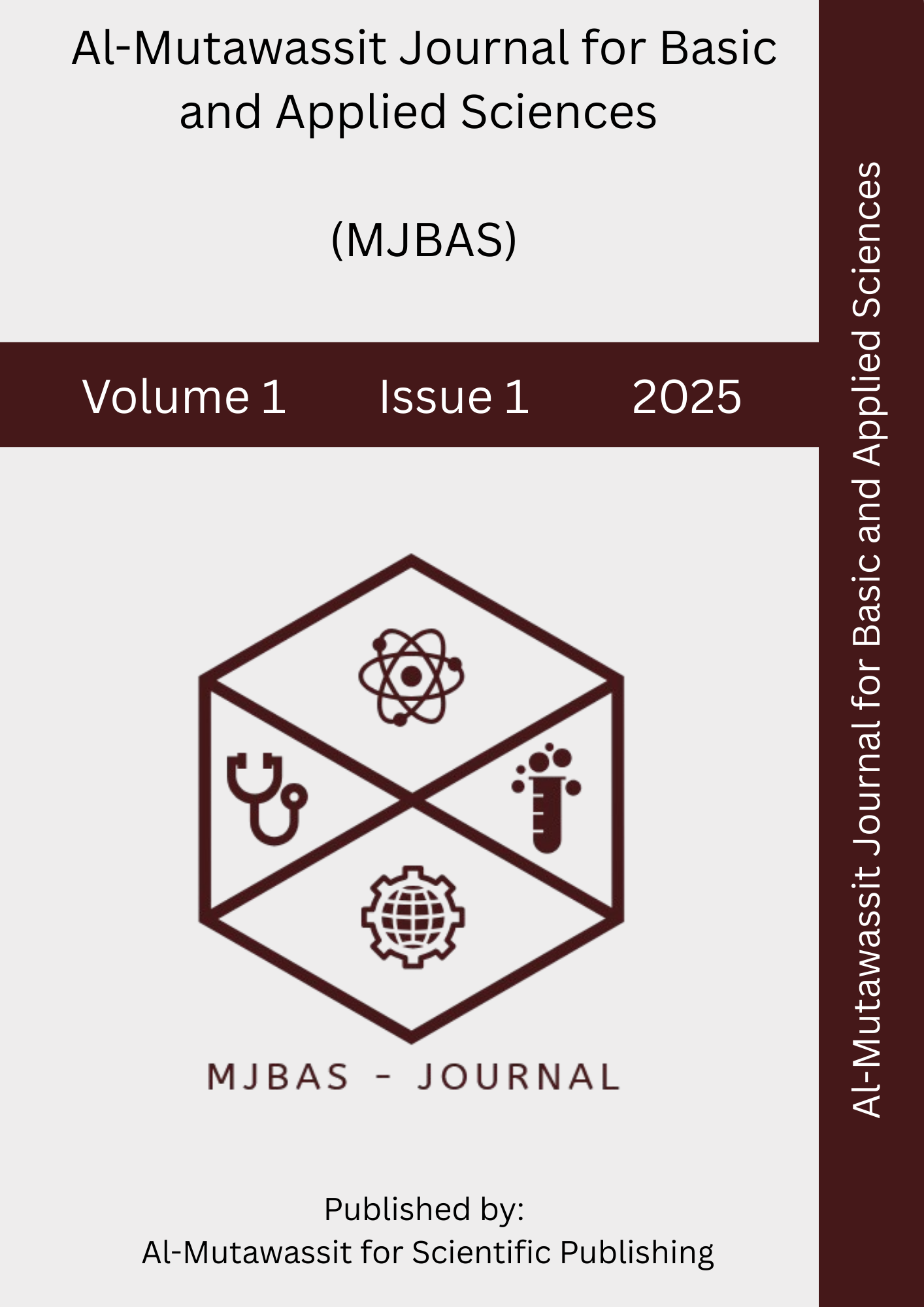Advancing Green Pharmacy through Biodegradable Drug Delivery Systems for Reducing Pharmaceutical Pollution and Enhancing Therapeutic Outcomes
Keywords:
biodegradable polymers, green pharmacy, pharmaceutical pollution, controlled release, PLGA, PLGA microspheres, drug delivery, environmental sustainability, pollution prevention.Abstract
The pharmaceutical industry faces a growing challenge from environmental contamination caused by persistent drug compounds entering ecosystems. “Green pharmacy” seeks sustainable solutions by redesigning drug products and their delivery mechanisms to minimize ecological impact. Biodegradable drug delivery systems (DDS) are a key innovation in this effort. These systems use biodegradable polymers (such as PLA, PLGA, PCL, and natural biopolymers) to encapsulate active ingredients and release them in a controlled manner, then degrade into harmless products (e.g. CO₂, water). This paper reviews recent advances in biodegradable DDS and their role in reducing pharmaceutical pollution. First, it summarizes evidence of widespread pharmaceutical contamination in waterways and the ecological risks posed. Next, it introduces the concept of green pharmacy and the environmental benefits of biodegradable carriers. We discuss common biodegradable polymers, their degradation mechanisms, and how design factors (polymer type, particle size, surface chemistry) affect drug release and breakdown rate. We highlight case studies: for example, PLA/PGA sutures and PLGA drug depots that provide prolonged therapy without persistent waste. A notable clinical example is biodegradable carmustine wafers (Gliadel) for brain tumors, which significantly improved patient survival while ultimately degrading in vivo. Biodegradable DDS also enhance therapy by sustained release and targeted delivery, reducing dosage frequency and side effects. The paper examines experimental studies of biodegradable microspheres and films delivering anticancer, antibiotic, and anti-inflammatory drugs, noting improved outcomes and reduced residue. Challenges include manufacturing scale-up, ensuring consistent degradation, and regulatory hurdles. The review concludes that integrating biodegradable DDS into pharmaceutical development offers a promising path to “green” medicines that heal patients without harming the planet.
References
1. Boxall, A. B. A., Peterson, B. J., et al. (2022). Pharmaceutical pollution of the world’s rivers. Proc. Natl. Acad. Sci. U.S.A., 119(8), e2113947119.
2. Brannon-Peppas, L. (1995). Recent advances on the use of biodegradable microparticles and nanoparticles in controlled drug delivery. Int. J. Pharm., 116(1-2), 1-9.
3. Brannon-Peppas, L. (2009). Poly(lactic-co-glycolic) acid as a carrier for imaging contrast agents. J. Biomed. Mater. Res. Part B Appl. Biomater., 90(1), 165-175.
4. Salwa Muftah Eljamay, Mohammed Marri Younus, & Fatma Muftah Eljamay. (2023). Side Effects of Receiving Different Types of COVID-19 Vaccines. Libyan Journal of Contemporary Academic Studies, 1(1), 54-65.
5. Nabil Saad Miftah (2025). Pharmacovigilance and Adverse Drug Reaction Patterns: A Data-Driven Study on Drug Safety in Clinical Practice. Journal of Insights in Basic and Applied Sciences, 1(1), 27-34.
6. Kamaly, N., Yameen, B., Wu, J., & Farokhzad, O. C. (2016). Degradable controlled-release polymers and polymeric nanoparticles: mechanisms of controlling drug release. Acc. Chem. Res., 49(2), 258-268.
7. Middleton, J. C., & Tipton, A. J. (2000). Synthetic biodegradable polymers as orthopedic devices. Biomaterials, 21(23), 2335-2346.
8. Shalem, A., Tang, F., et al. (2024). Enzymatic degradation of polylactic acid (PLA). Appl. Microbiol. Biotechnol., 108(1), 413.
9. Wafa Emrigha Abotabel. (2025). The Impact of the Gut Microbiome on Mental Health: Exploring Psychobiotics and the Microbiota–Gut–Brain Axis. Journal of Libyan Academy Bani Walid, 1(2), 150–160.
10. Su, Y., Zhang, B., Sun, R., Liu, W., Zhu, Q., Zhang, X., Wang, R., Chen, C. (2021). PLGA-based biodegradable microspheres in drug delivery: recent advances in research and application. Drug Deliv., 28(1), 1397-1418.
11. Westphal, M., Hilt, D., Bortey, E., Ram, Z., et al. (2003). A phase 3 trial of local chemotherapy with biodegradable carmustine (BCNU) wafers (Gliadel wafers) in patients with primary malignant glioma. Neuro-Oncology, 5(2), 79-88.
12. D’Souza, S. J. (2014). A science and business literature review of polymeric injectable depot systems. Int. J. Pharm., 475(1-2), 23-46.
13. U.S. FDA (2023). DEXON® Violet Polyglycolic Acid Suture (Procode 73GAM). Product Label and Approval History.
14. Nusaiba Abduladim Elmahjub (2025). Deep Learning for Early Detection and Classification of Diabetic Retinopathy in Clinical Practice. Libyan Open University Journal of Medical Sciences and Sustainability, 1(1), 11-19.
15. Iman Nsser Zew. (2025). Evaluation of Polycyclic Hydrocarbons Using Thermal Analysis and the Scientific and Biological Study of Isolated Bacteria Isolated from Contaminated Soil in Al-Zeit Street, (AL-Iraq Street), Benghazi, Libya. Journal of Libyan Academy Bani Walid, 1(2), 65–118.
16. Hamza Khalifa Ibrahim. (2025). Emerging Viral Threats in the Post-Pandemic Era: Surveillance, Climate Dynamics, and Global Health Preparedness. Libyan Journal of Health, Science, and Development (LJHSD), 1(1), 08-15.
17. Nagah Bobtina, Intesar Elmasli, Ali Bubteina, & Maryam Akhwater. (2025). The effect of risk factors, heredity and chronic diseases on property incidence of kidney disease. Journal of Libyan Academy Bani Walid, 1(2), 39–50.
18. Nabil Saad Miftah (2025). Transforming Healthcare Through Artificial Intelligence: From Predictive Diagnostics to Personalized Therapeutics. Libyan Open University Journal of Medical Sciences and Sustainability, 1(1), 37-44.
19. Nusaiba Abduladim Elmahjub (2025). Global Trends in Prescription Drug Utilization and Resistance Patterns: A 15-Year Comparative Study of Therapeutic Practices. Scientific Journal for Publishing in Health Research and Technology, 1(1), 26-34.
20. Hamza Khalifa Ibrahim (2025). Adverse Drug Reactions in Polypharmacy: A Real-World Pharmacovigilance Study Using EHR Data. (2025). Journal of Insights in Basic and Applied Sciences, 1(1), 10-19.
21. Mohamed Salem, & Ilyas Salem. (2025). Antimicrobial Polymers: Mechanisms of Action and Applications in Combating Antibiotic Resistance. Al-Imad Journal of Humanities and Applied Sciences (AJHAS), 1(1), 12-15.





